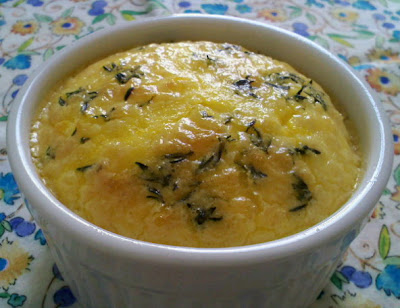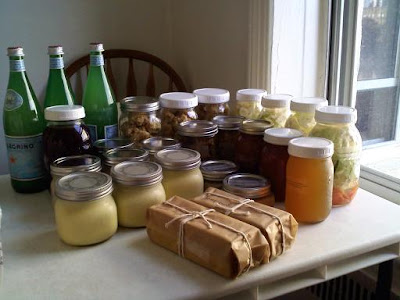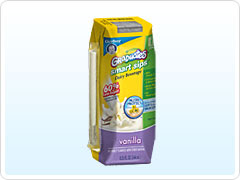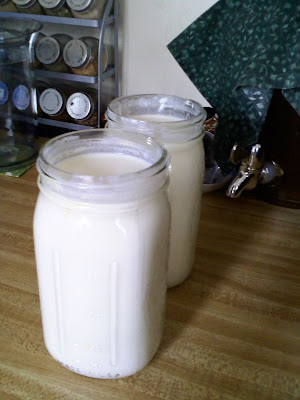This is more of an essay than a blog post, but I need to post this somewhere so I can link to it in my newsletter. Read on if you like!As some of you may know, I have been working hard to organize an intro workshop to the Fertility Awareness Method as a resource for the parents’ group I lead. The workshop is happening this Sunday afternoon, which is very exciting to me! (register
here) In spite of the difficulties I have encountered in getting this off the ground (finding a good presenter, obtaining a low-cost venue, discovering the workshop space donated has no chairs on the premises, changing the workshop venue...among other things!) it promises to be a great event and I’m really glad this is happening. To the best of my knowledge, there has been no such workshop in the NYC area in all the time that I have been practicing Fertility Awareness (nearly 2 years), though there is considerable interest in the method. It seems every week I meet someone (usually another mother) who is practicing or at least knows about FA.
I came to learn about Fertility Awareness in fall of 2008, after Oliver’s birth. I had been a longtime birth control pill user before the pregnancy, going on and off (but mostly on) the pill since I was 20. I tried the patch in there at one point, with unpleasant results, but always liked the reliability of the pill and not having to worry about getting pregnant. In grad school I worked for Planned Parenthood of New York City, both as a very privileged intern with a lot of interesting projects, and after graduation as a contracted researcher, performing qualitative research on doctors’ perceptions of the “morning-after” pill (emergency contraception/Plan B pill). My opinions about women’s access to the complete spectrum of contraceptive choices were very strong, but I knew next to nothing about how the pill and other hormonal methods affect a woman’s health and well-being. It didn’t matter to me then; I had too many other things I was thinking about.
Around the time I got pregnant, in fall of 2007, I learned that I had hypothyroidism, a condition where the thyroid gland, which is located in the neck, is underproducing thyroid hormone. I also had antibodies in my blood which were attacking the hormone I did have. Since thyroid hormone is essential for every cell in the body and lack thereof is implicated in problems like miscarriage and preterm delivery I was strongly admonished to take Synthroid (a synthetic thyroid hormone medication) and monitored regularly throughout my pregnancy for thyroid hormone levels.
During the pregnancy experience my world opened up and my interests and ideas began to take a new direction. I learned about the option of birthing at home for the first time in my life, and Hugo and I decided on a home birth. Our midwife came to our apartment for all my prenatal care which was incredibly relaxing and comfortable for me, especially since I worked from home at the time cooking for clients. She is the one who first told me about the option of using the Fertility Awareness Method and recommended The Garden of Fertility, though she herself had never read it. At the time I had a friend who kept raving about her IUD and I wanted to be extra sure about not getting pregnant again right away, so I was pretty much planning on getting an IUD put in after the delivery.
Well, that was before I had my cervix prodded during labor by three sets of health care practitioner hands. After the experience of labor and having a cesarean section (I was unable to dilate and deliver Oliver vaginally despite every intervention known to man) I really could not stomach having a needle put into my cervix and then having someone stick a pointy object up inside there. It all seemed too horrible and was going to prove impossible for me, especially since I couldn’t even hear the word “cervix” without wanting to pass out. I decided to look into this Fertility Awareness Method and see if that would be an alternative.
While reading The Garden of Fertility, by Katie Singer, I first learned about the Weston A. Price Foundation and the importance of nutrient-dense foods for fertility, pregnancy, babies, and women’s overall health (particularly reproductive health). It was the first time I had realized the connection between having a strong ovulatory cycle and being an overall healthy person. It was also the first I had heard that my body actually NEEDED animal fats! For years I had eaten low-fat as much as possible, and for the prior year I had focused entirely on a vegetarian diet which was very soy-heavy (the book enlightened me about soy’s highly goitrogenic, or anti-thyroid, properties). I also experienced extreme hypoglycemic episodes on a daily basis, and couldn’t leave the house for even a brief walk without carrying a snack with me. I was hungry all the time, and eating many meals throughout the day. I had issues with acne, PMS, anxiety, fatigue, irritability, digestion, cravings for lots of bad foods...the list goes on. Something really resonated for me in reading this section of Katie’s book and I began to delve into the work of the Weston A. Price Foundation. Her mention of thyroid conditions also prompted me to read the book Solved: the Riddle of Illness, which I remember vividly because it was there that I learned how deeply destructive birth control pills are for a woman’s body and thyroid in particular. Around the same time I spoke with a sort of amateur thyroid expert in passing who mentioned that the Synthroid I was taking had likely interfered with my ability to dilate and give birth to Oliver. All these factors made me absolutely determined to do something about this condition, to get off the medication, and to heal my body once and for all.
I should mention here that I tried repeatedly to get my endocrinologists (I saw 3 in all) to put me on the natural thyroid hormone replacement therapy known as Armour. If you must take medication for hypothyroidism this is really the only way to go; the Synthroid is terrible stuff. However, since Synthroid is heavily marketed by the drug companies almost no one will consent to prescribe Armour anymore, though it used to be the only therapy (and is actually very cheap to make). I also asked my 2nd endocrinologist, a local practitioner I really liked, if she could help me heal my thyroid so I could get off the medication. Her response was that there was nothing I could do and I would be taking meds the rest of my life. I was sure there was a better way, though!
For nearly a full year following Oliver's birth I gradually transformed my diet. My first big switch was replacing all the dairy in our diets with raw, local, grass-fed, organic dairy. I started eating a LOT of raw grass-fed butter and taking cod liver oil. These changes made a big difference. Other changes that I adopted over time included making nutrient-dense bone broths (including fish broth, especially good for the thyroid); cooking with traditional fats (including lard, chicken fat, and coconut oil); fermenting my own condiments, beverages, and vegetables; properly soaking and preparing whole grains; eating small amounts of organ meats; and getting all the processed junk out of my diet.
While changing my diet, maintaining my FA chart helped me begin to at last keep track of what my body was up to, and how it responded to certain foods. I learned very early on that I would become quite sick after having sugar, usually with a breakdown in my immune system that would lead to contracting a bad cold, sinus infection, or flu. My FA chart showed a clear picture of my daily state of health, whether bad or good. Since waking temperatures are charted daily, it was easy to see when I had a fever for several days. I was not ovulating for many months, since I was exclusively breastfeeding Oliver, so I knew the times of fever were not due to the rise in temperature that comes immediately following ovulation.
For a very long time it seemed my body was in a state of ambiguity, not sure about what it was doing or what it wanted to be doing, as far as fertility and ovulation go. Eventually I was able to observe an increase in estrogen (evidenced by some fertile-quality cervical mucus) but other signs were still ambiguous. As my body prepared to return to normalcy, my waking temperatures remained quite low, usually in the mid 96’s, which is generally a sign of hypothyroidism and adrenal fatigue. As the months went by, however, something magical began to happen: my temperatures gradually increased to the normal range, and one month at last I had my first normal ovulatory cycle -- and even more thrilling, I KNEW it! For the first time in my life I actually knew what was going on with my body; I could actually pinpoint the fertile days of my cycle. A few more months went by and my ovulatory cycles kept getting stronger until at last I experienced a textbook cycle, with a clear shift in temperature that stayed up above 98 degrees the way it was supposed to.
I am no expert on FA, I forget the rules and have to consult my book, I don’t remember what the luteal phase is off the top of my head, but I know enough now to be aware of what’s happening in my body. I know I can absolutely avoid pregnancy, or get pregnant whenever I want to--and all with only a sacrifice of a few minutes a day. No more wrangling with my HMO over covering my preferred brand of oral contraceptives, no more obsessing over taking a pill at the same time every day, no more wondering if I am really pregnant but just don’t know it. This is empowerment like I never got from birth control pills.
As my waking temperatures increased and my cycles became more stabilized I also began having difficulty tolerating my thyroid medication. I began to feel anxious and jittery when I took it, and even adjusting the dosage way down and skipping days in between taking the pills still led to the same feelings whenever I took the medication. At last I consulted someone who put me through a rigorous health questionnaire and informed me that I had absolutely no symptoms of hypothroidism. Furthermore, she told me, I rated better than anyone she had ever seen on symptoms of blood sugar imbalance, including hypoglycemia. By this time I was able to go many hours between meals, and had no need of snacks throughout the day. I felt healthy and empowered enough to completely go off my medication upon her recommendation, and have never had another symptom of hypothyroidism since.
I see my journey with FA as absolutely integral to my health recovery. If I hadn’t picked up that library copy of The Garden of Fertility I would likely have never learned about the Weston A. Price Foundation, about raw milk, about pastured butter, about local farms raising animals and produce in the old-fashioned and truly natural way, about eggs with yolks so bright they almost hurt your eyes. I would still be in a world of doctors’ waiting rooms and regular trips to the pharmacy, feeling too tired on some days to deal with life, wondering why I wasn’t healthy despite my low-fat diet. I would still feel that every day was potentially a fertile day, that sex was fraught with the danger of a too-early second pregnancy, that my body was a frustrating mystery I would never understand. The changes in my life and health are incredible; looking back I can’t believe I lived any other way.
Does any of this ring a bell for you? Please add your comments, and check out The Garden of Fertility by Katie Singer when you have a chance. If you're interested in our workshop this Sunday by all means come! For one-on-one coaching by phone with Ilene Richman, director of the Fertility Awareness Center (NYC), please email admin@fertaware.com or visit
www.FertAware.com.





















